- V
- GF
- NS
- DF
- View Recipe Key
How to Make Classic Madeleines
How to Make Classic Madeleines
Tasting a classic madeleine right as it comes out of the oven is an unforgettable experience. Learn how to successfully make them at home using clever tips and an easy recipe.
This post contains affiliate links. Full disclosure is at the bottom of the article.
Some desserts are simply unforgettable once you taste them within seconds of their coming out of the oven. There’s a special place in my heart for madeleines: French, shell-shaped, light-as-air tiny cakes. Madeleines are best eaten the day they’re baked, and if you’ve ever tasted one warm from the oven with an impeccably crunchy edge, I’m sure you know how life-changing such a small bite can be. Madeleines are the epitome of what makes French pastry-making so great: the art of turning simple ingredients into outstanding creations.
I love to make bite-size French treats of all kinds: I’m partial to financiers, because of how easy they are to make, and when I have a bit of time on my hands, I’m happy to whip up a batch of macarons. But the go-to, no-frills French treat I make when I want to impress is classic madeleines. I can’t count how many times I’ve made them—my madeleine pans have been used and washed so many times, I just don’t understand why they don’t look more beat-up than they do.
Classic madeleines are usually as simple as sponge cake can be. After a visit to Blé Sucré, a Paris pastry shop that makes the city’s best madeleines, according to David Lebovitz, Dorie Greenspan, and Clotilde Dusoulier, to name just a few, I discover a madeleine twist I became addicted to. Blé Sucré’s classic madeleines are brushed with an orange glaze—not on the shell side, but on the humpy side. I’d never seen that anywhere else: this sweet glaze showcases the plumpness of madeleines and adds a lovely crunch to the cake. After I tasted one of Blé Sucré’s madeleines, I went back in to buy a bag—and then I went back every day for the length of my stay in Paris. They were the freshest, lightest, most magical madeleines I had ever tasted.
This tasting experience sent me on a quest to re-create Blé Sucré’s classic madeleines at home. I’ve been testing and tweaking my recipe over the years, and I think my recipe for classic madeleines comes as close as ever to the dreamy treat I enjoyed in Paris many years ago. You can enjoy the classic madeleines as is, or brush them with the glaze. I like to add a bit of orange zest to the madeleine batter to underline the wonderful aroma from the glaze. I’ll also often switch it up and use lemon in both the madeleines and the glaze, too.
In this post, I’m not only sharing my recipe for classic madeleines but also all my tips to help you learn how to make perfect classic madeleines. You might have heard that madeleines are tricky to achieve, but don’t believe the hype. With a few tricks, you too will be able to make perfect, classic madeleines at home—and save an expensive trip to Paris in the process.
French Madeleines Recipe Video
Learn how to make perfect French madeleines with this short recipe video!
Helpful Tips for Making Classic Madeleines
What, exactly, are madeleines?
Madeleines are tiny cakes that are baked in a specialty mold that has shell-shaped cavities. This shape allows the cakes to bake to a super light and tender texture with irresistibly crisp edges. Madeleines look very elegant and they’re a staple in French bakeries. As fancy as they look, madeleines are easy to make at home: aside from a specialty pan, no other special equipment is required, and no advanced technique is needed to achieve perfect results.
Why are madeleines called madeleines?
The madeleine, a small sponge cake with a shell-like shape, is a classic French confection with a long history. Stories about its creation are conflicting, but the Larousse Gastronomique relates that the bite-sized cake was invented by a young farmer named Madeleine in the small town of Commercy, in the northeast of France. In 1755, the King of France discovered the farmer’s small shop and loved her cakes so much that he named them after her, and the recipe soon became a hit in Versailles and Paris.
Whether or not this is the real story, it certainly is akin to a fairy tale. A small and humble confection makes it to a king’s court? It suits the madeleine’s dainty appearance perfectly.
What can I use instead of a madeleine pan?
If you’re like me, you probably already have too many baking pans, and so you’re wondering if you really need to get a new pan just to make madeleines. Although a madeleine pan is the only pan that will produce shell-shaped cakes, you can also use a muffin pan to make delicious madeleines. To make madeleines in a muffin pan, generously grease and lightly flour all muffin cups, tapping off the excess. (You can also line the pan with parchment paper cups.) If you add only a small amount of batter to each cup, you will produce thin cakes with crisp edges that very closely mimic the texture of authentic madeleines. If you go the extra mile as indicated in the recipe—freeze your pan and refrigerate the batter—your round madeleines will even have that signature hump in the center of the cakes.
How can I get those perfect humps on classic madeleines?
Madeleines have a pronounced hump on their back. This hump is the signature of a “perfect” classic madeleine. This hump has given madeleines a completely undeserved fussy reputation: it’s actually very easy to bake perfectly plump madeleines.
Madeleine humps are achieved by a temperature shock between a freezing cold pan and cold madeleine batter, and a very hot oven. While it might be tempting to skip the freezing and refrigerating delays to produce madeleines faster, you should know that haste will likely lead to madeleines that aren’t as fluffy, light, and high as they could be.
A note though: Flatter madeleines are perfectly delicious if they’re flatter, so please! Never, ever throw a batch of madeleines away if they don’t rise as much as you would like. Be patient. Your next batch will be perfect!
How can I make sure madeleines don’t stick to the pan?
Although modern madeleines pans are sold as “nonstick,” the only way to ensure your madeleines will pop right out of their molds is to generously butter and lightly flour each cavity. To do so, use a pastry brush and very soft—not melted—butter to grease the cavities, then lightly sift flour over the pan. Tap the edges of the pan on your countertop to make sure the flour covers the butter evenly, then tap the pan upside down over your sink or a working surface to shake off excess flour.
Can I use a silicone madeleine pan?
For the fluffiest, humpiest madeleines, metal pans are best simply because they can become icy cold in the freezer, thus creating a more important temperature shock when you put the madeleines in the oven. This shock between the ice-cold pan and cold madeleine batter and the super-hot oven is what makes madeleines rise the highest. Silicon pans just can’t become cold enough to create the same effect.
If you have a silicone madeleine pan on hand, by all means, use it though! Although silicon is naturally nonstick, a delicate pastry such as classic madeleines could still stick to the pan and break when you try to unmold them. Always make sure to thoroughly butter and lightly flour a silicon pan before you use it. (See the previous question for additional tips.)
Can I make classic madeleines ahead of time?
Madeleine are at their very best freshly baked. This is when the contrast between the super-light crumb and the crunchy edge is at its very best. In an ideal world, madeleines should be enjoyed within a couple of hours of coming out of the oven.
If you store madeleines in an airtight container, they will lose their delicate crispy edges. Day-old madeleines are still absolutely delicious, though. Their texture will remind you more of a mini cupcake, which is nothing to balk at.
The good news is that madeleine batter will keep refrigerated for up to three days, which means you can bake just as many madeleines as you need and enjoy them fresh over several days. A pretty dreamy proposition, if you ask me!
Can madeleines be frozen?
I’m sorry to repeat myself, but madeleines are at their very best when enjoyed freshly baked. Though madeleines can be kept in an airtight container for a couple of days and still be a delight, I definitely would not recommend freezing them. The freezing and thawing process will irreparably impact the texture and flavor of the delicate cake.
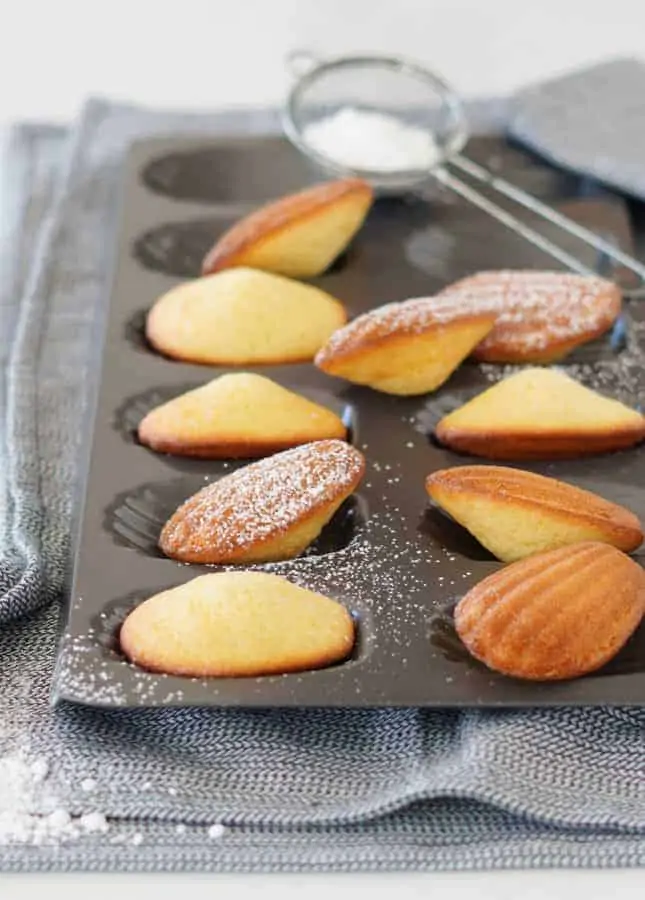
Classic Madeleines
Ingredients
For the madeleines
- 1 cup all-purpose flour
- 1 tsp baking powder
- ½ tsp baking soda
- Pinch kosher salt, or fine sea salt
- 3 eggs
- ⅔ cup granulated sugar
- 1 tsp pure vanilla extract
- 1 tsp finely grated lemon or orange zest (optional)
- ½ cup unsalted butter, melted and cooled
For the glaze (optional)
- 1 cup powdered sugar, sifted
- ⅓ cup freshly squeezed orange or lemon juice, strained to remove the pulp
Instructions
- Make the madeleines: Preheat the oven to 425°F (220°C). Set a rack in the upper third of the oven. Generously grease a madeleine mold with soft butter or cooking spray, then dust with flour, tapping the pan upside down to remove excess. Place the pan in the freezer.
- In a medium bowl, sift the flour, baking powder, baking soda, and salt together, and set aside.
- In the bowl of a stand mixer fitted with the whisk attachment (or in a large mixing bowl, if you’re using a hand mixer), mix the eggs and sugar together for 5 minutes until the mixture is pale and thick. Whisk in the vanilla extract and lemon zest.
- With the mixer running at slow speed, drizzle the melted butter into the batter, mixing just to incorporate. Using a spatula, add the reserved dry ingredients a third at a time, folding between each addition until just incorporated. Cover the mixing bowl with plastic wrap and refrigerate the batter for 30 minutes to an hour, or up to overnight.
- Take the prepared madeleine mold out of the freezer. Take the madeleine batter out of the fridge. Using a spatula, gently mix the batter so relax it and remove excess bubbles that have formed while the batter was resting.
- Fill each shell-shaped cavity with two teaspoons of batter, or about three-quarters full (using a small ice cream or cookie scoop allows you to fly through this step). Place the remaining batter back in the fridge.
- Bake the madeleines for 8 to 10 minutes or until they are puffed and golden. Unmold as soon as you take the madeleines out of the oven by turning the mold upside down and gently coaxing uncooperative madeleines out with the tip of a butter knife. Place the madeleines shell side up on a wire rack set over a baking sheet. Using a pastry brush, generously coat each madeleine with the glaze while they’re still hot. Let the madeleines cool and the glaze set.
- Before baking the next batch, thoroughly wash the madeleine mold, then grease and flour again. Place in the freezer at least 10 minutes. Fill the cavities with cold batter, then bake as instructed. Repeat as necessary.
- Always serve madeleines at room temperature. Madeleines are best enjoyed freshly baked, but they will also keep in an airtight container at room temperature for up to 3 days.
Did you make this?
Tell me how you liked it! Leave a comment or take a picture and tag it with @foodnouveau on Instagram.
Disclosure Notice: This site is a participant in the Amazon Associates Program, an affiliate advertising program designed to provide a means for the site to earn fees by linking to Amazon and affiliated sites.
If you click on an affiliate link, I may earn advertising or referral fees if you make a purchase through such links, at no extra cost to you. This helps me creating new content for the blog–so thank you! Learn more about advertising on this site by reading my Disclosure Policy.
Author: Marie Asselin

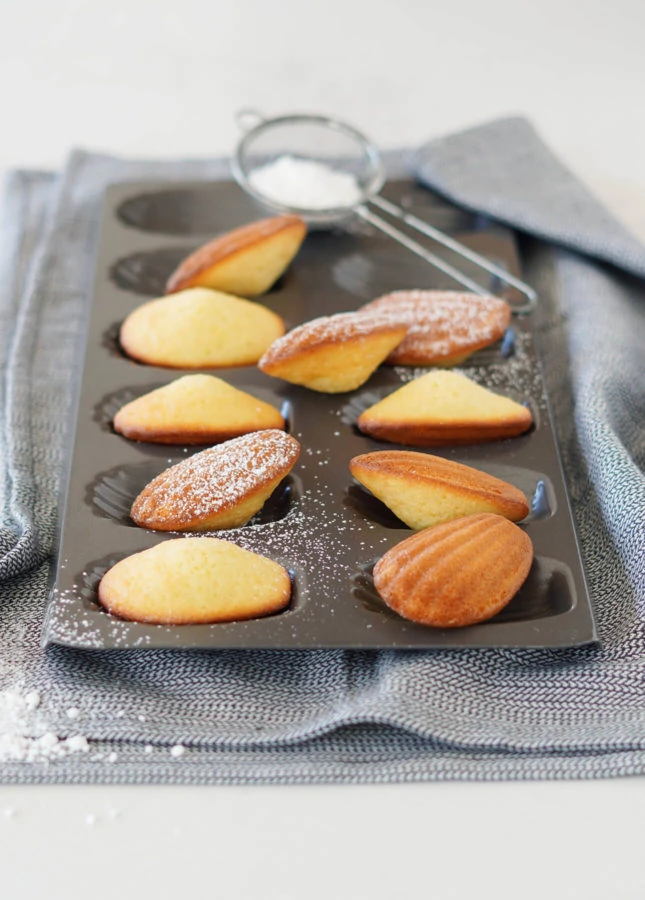
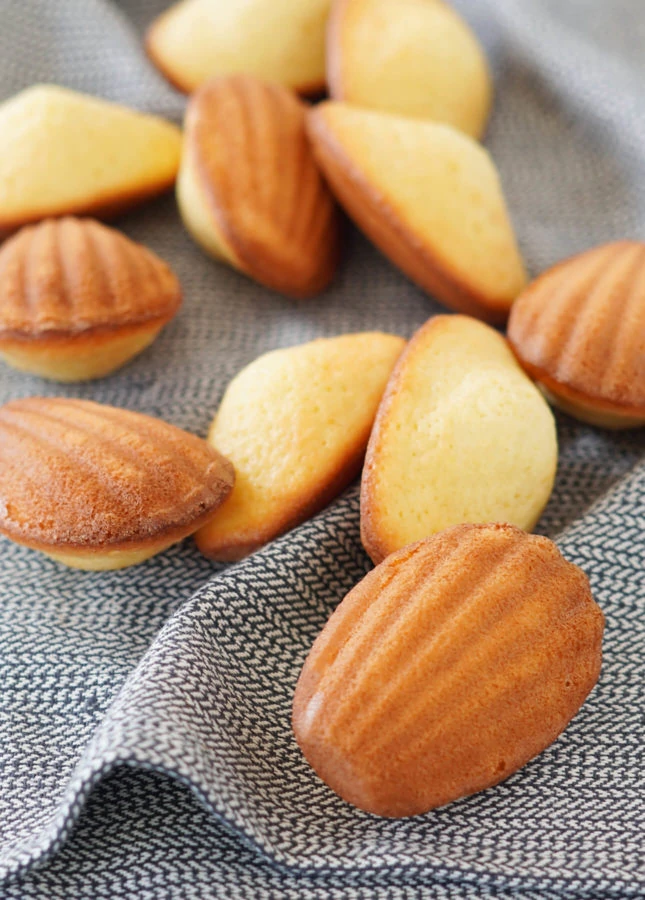
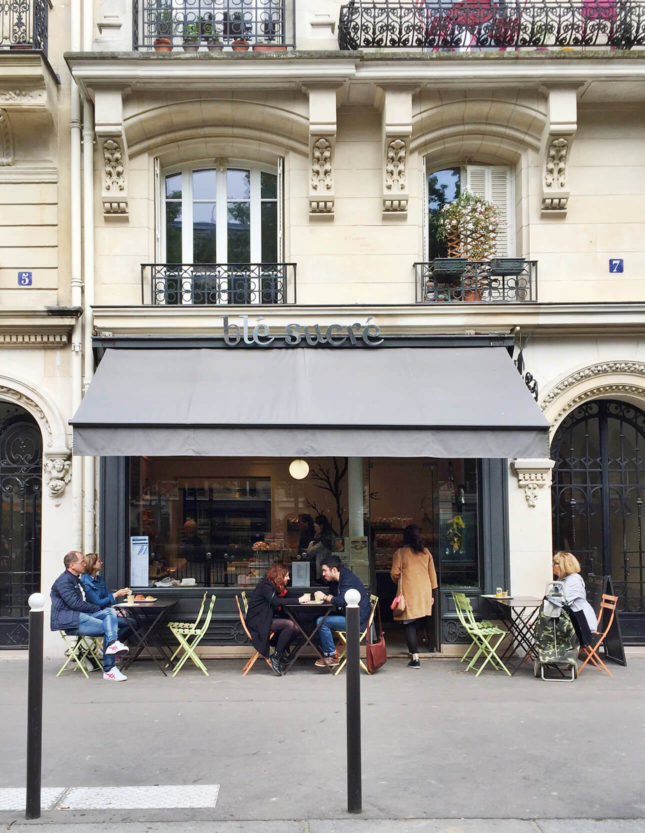
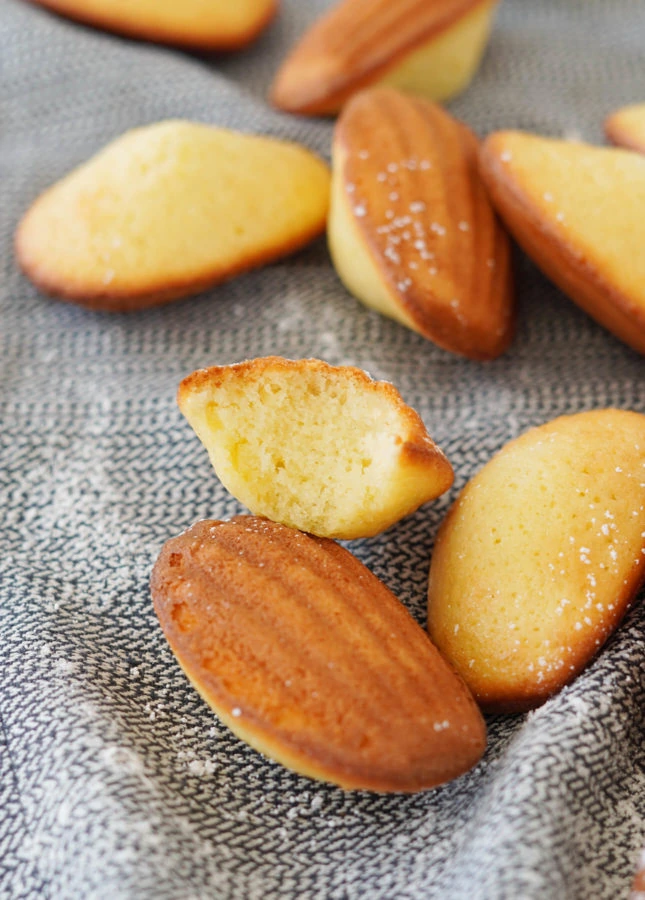
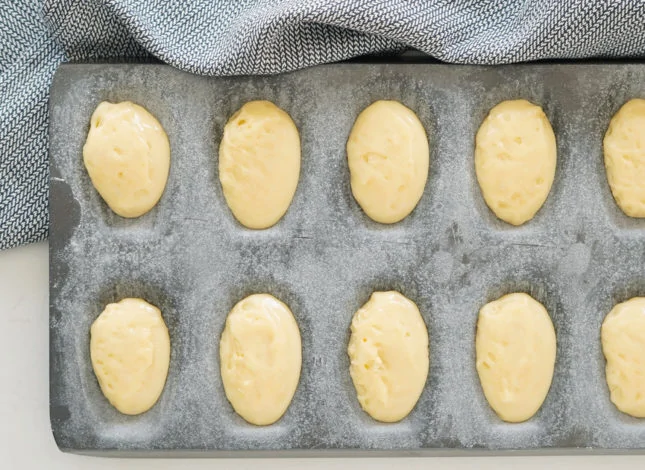
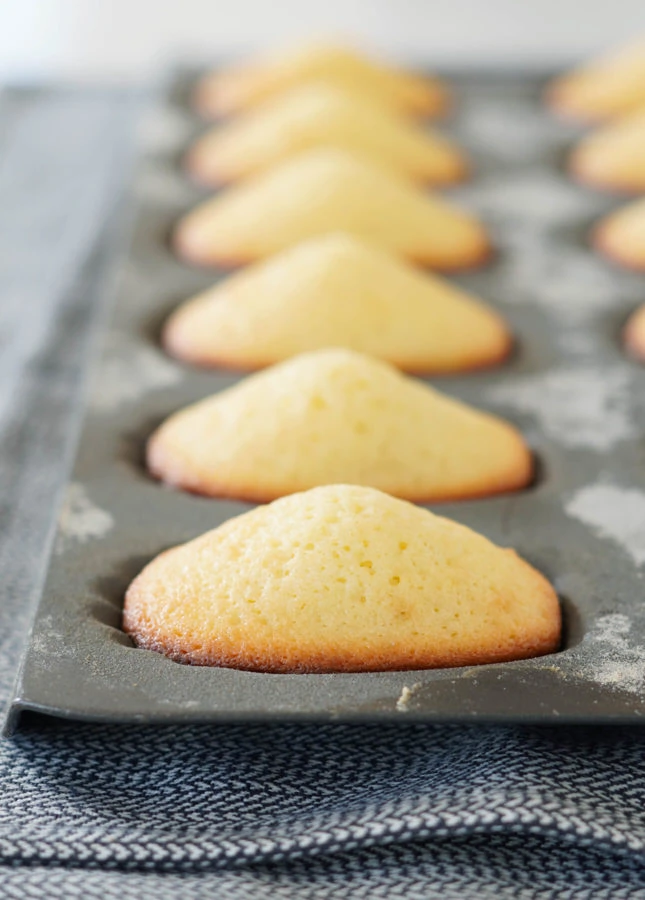
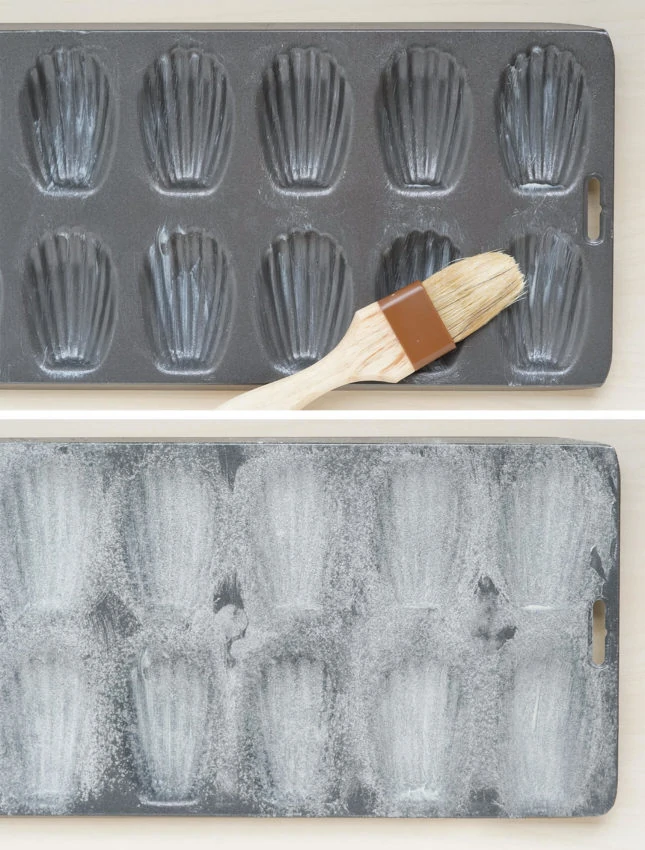
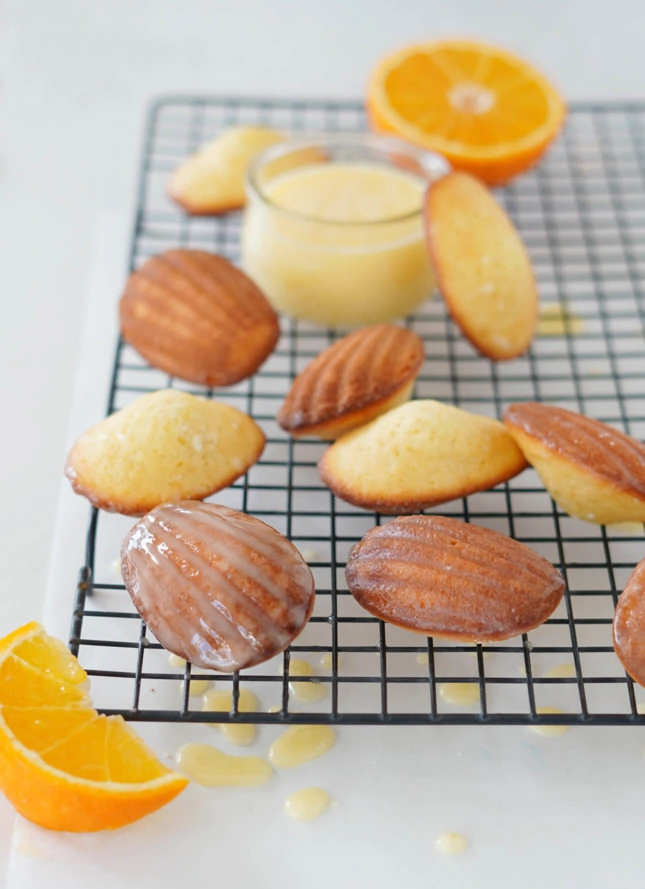
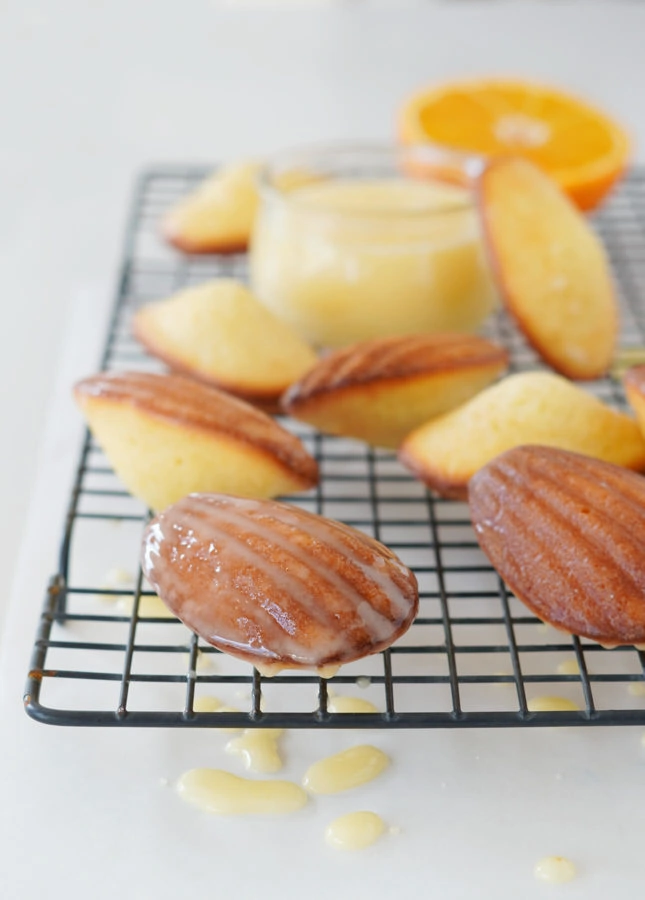

Easy to make. Need the mould.
A madeleine pan is indeed required to make that classic shell shape but don’t hesitate to try the muffin pan method if you don’t have a madeleine pan on hand! It creates super delicious little cakes, too, just of a different shape 😉
I love Madeleines! They are such special little cakes. Now thanks to your awesome recipe I can make them at home whenever I want!!
Madeleines are such a treat! Any occasion feels more special when madeleines are involved :)
I so love making these. Yours turned out gorgeous and definitely has my mouth watering! Thank you for sharing!
Happy to read this Lori! Thanks for the feedback!
Great recipe! We made this madeleines at the weekend and they turned out light, fluffy and well risen. They weren’t oily at all and we were very pleased. Can’t wait to make them again!
I’m so happy to read this Natalia. I spent a lot of time perfecting this recipe so I’m excited to hear it’s working for everyone else, too!
I had no idea madeleines were so easy to make! Your recipe is awesome, everyone loved those little cookies
Thanks Dennis! All you need are a few clever tips to get your madeleine baking career started 😉
We are all big madeleine fans at home. I made mines with orange zest but never thought about the glaze! I think your are going to be new favorites from now on!
The orange glaze is everything! You’ll love it, especially if you already used orange zest in your madeleines. It really boosts the flavor and gives the madeleines that irresistible sweet crunch!
These Madeleines look absolutely amazing! And I love the orange glaze. I’m sure it makes them even more delicious!
Oh yes, the glaze changes everything! It makes the madeleines even more aromatic and gives them that little extra sweetness everyone loves.
I’ve always wanted to make these cookies from scratch and I’m so glad I found your recipe. This was so easy, delicious and a huge hit in my house. Will be making again soon, thanks!!
Happy the madeleines worked for your Kathryn!
Thanks for the easy to follow instructions and tips. I have a madeleine pan that I’ve never used, but now it’s time to break it in!
Ah yes, so many people have that pan gathering dust somewhere in their kitchen! It’s definitely time for you to dust it off and put it to good use. I know you’ll love your freshly baked madeleines!
I am such a big fan of madeleines. I am so thrilled to find your recipe! They came out amazing. Yay! Thanks so much for sharing; I will make them again!
Thanks so much Jenny! Happy to know your batch turned out well. I suspect there will be many more madeleines in your near future. Once you get the hang of making them, you just can’t stop!